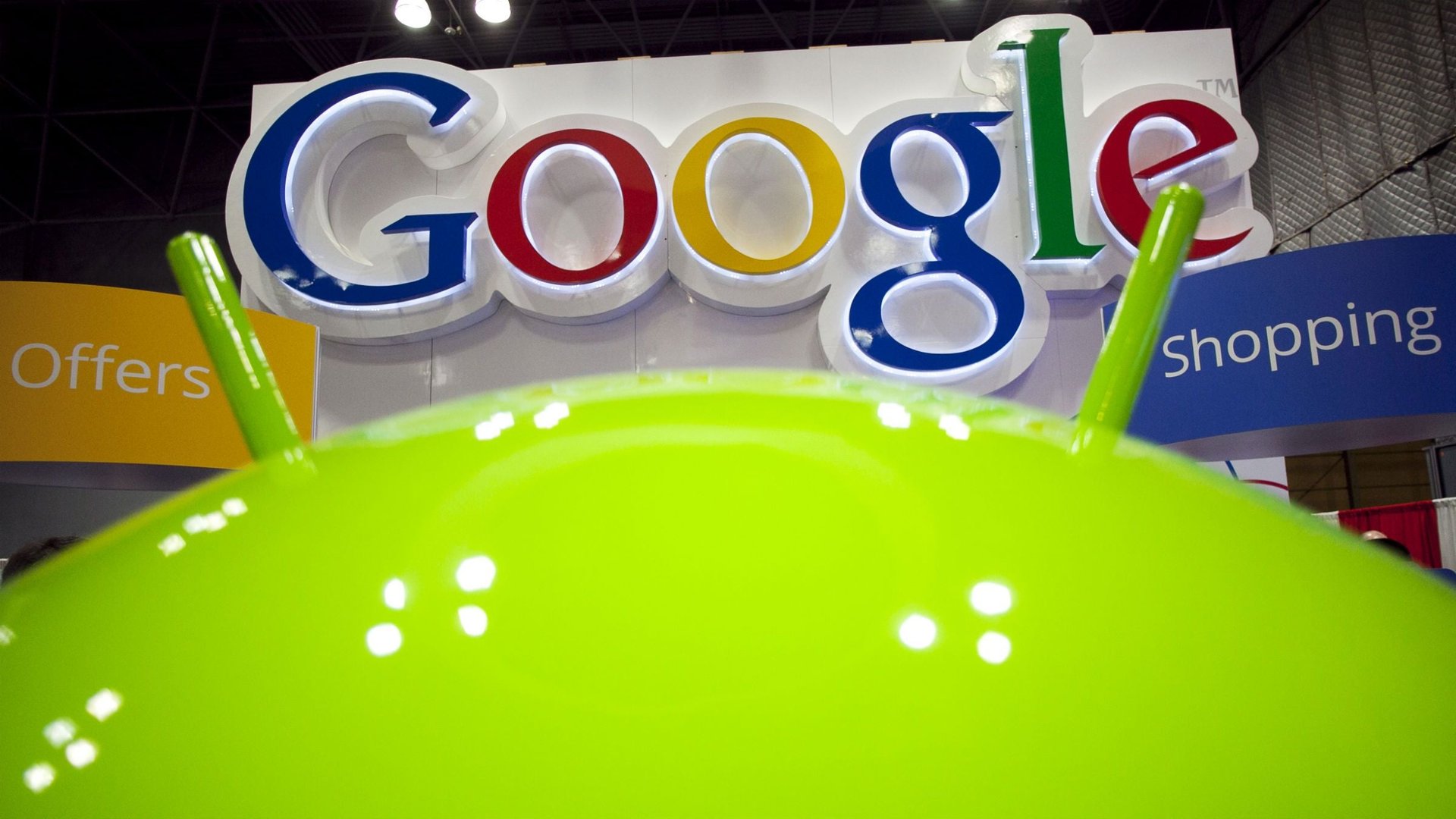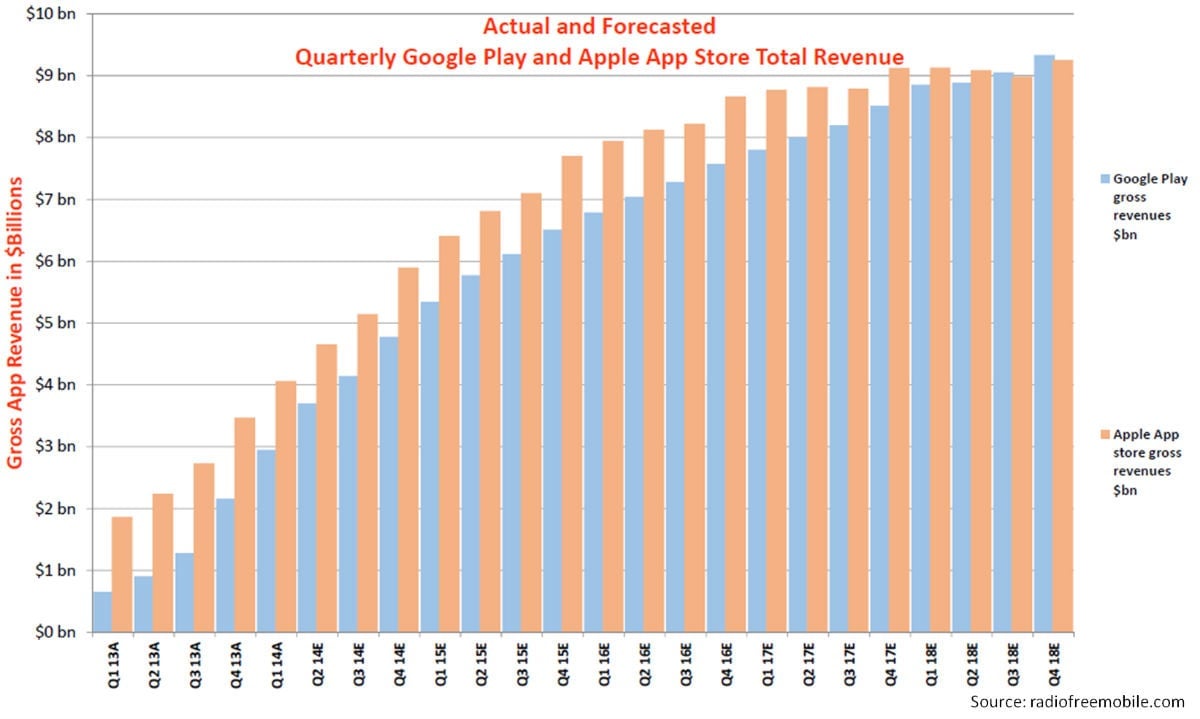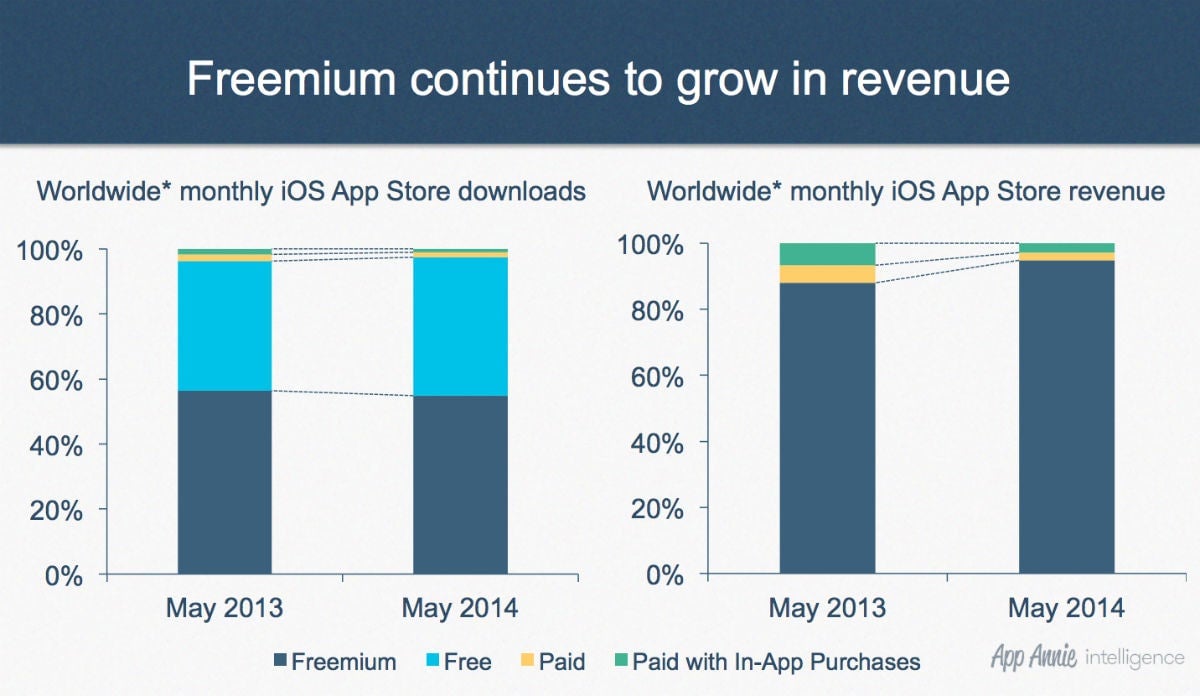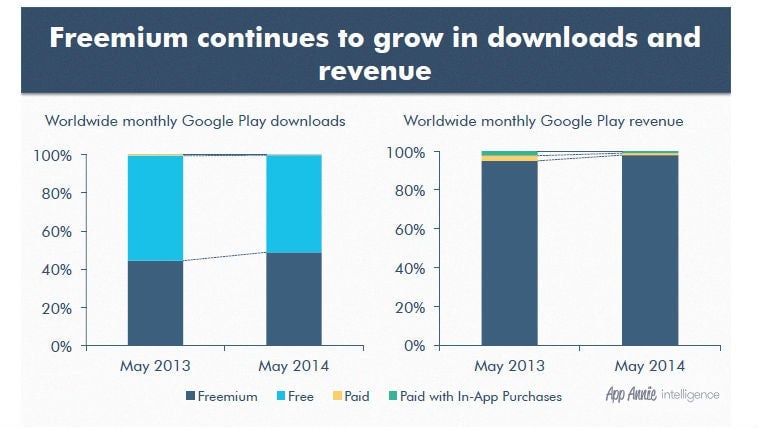Revenue from the Google Play store will overtake Apple’s app store in 2018
The Google Play Store mobile app revenue will catch up to Apple’s App Store in 2018, according to Radio Free Mobile analyst Richard Windsor. The sheer magnitude of Android’s 80% market share is driving app revenue growth despite lower per capita spending by Android users.


The Google Play Store mobile app revenue will catch up to Apple’s App Store in 2018, according to Radio Free Mobile analyst Richard Windsor. The sheer magnitude of Android’s 80% market share is driving app revenue growth despite lower per capita spending by Android users.

If Clay Christensen is right, the lower income, underserved market that can’t afford Apple products is open for Google to disrupt. IDC has forecasted an average smartphone selling price of $335 this year, which is nearly half the price of an iPhone 5s. As the iPhone price premium grows relative to Android, the differences between what Apple and Google offers to consumers and developers has narrowed significantly.
Though Apple’s iOS commands a strong brand preference amongst its loyal consumers, Android has matured closing the feature gap that Apple once had. App makers often have a preference to design apps first for iOS—successful apps are quickly redesigned for Android and companies unconstrained by budgets develop for both, either simultaneously or in lock-step. When Facebook reorganized around mobile first development in September 2012, the company debuted a redesigned iOS app and shortly thereafter released an equivalent Android app. The Wall Street Journal (subscription required) reported that Eric Feng, chief technology officer at Flipboard said that “Growth on the [Android] platform has been tremendous.” Flipboard’s Android app released 18 months ago, two years after its debut on iOS, and now accounts for over half its users.
Henry Cipolla chief technology officer of app analytics and marketing company Localytics told Quartz: “App development on Android is technically more challenging due to its fragmentation from multiple versions running on consumers’ devices, but since Google improved backward compatibility that simplifies writing one app for many Android versions it is less of an obstacle especially for a company that believes their app will make money.”
Google Play and the Apple App Store have grown into very sophisticated global app ecommerce platforms that have been driven to become very similar by the identical needs of consumers and developers. Cipolla says, “at a macro level, there isn’t a decisive difference between the app stores because they both do what they are supposed to do and that is pretty much the same thing. Consumers want a trusted place to download apps and developers want app distribution that attracts consumers, provides payment and merchandizing services and gives them performance data about how often and where their apps are downloaded.”
The best example of how the market has driven the two stores to adapt and become similar is the change from paid-in-advance downloads to freemium pricing. Freemium priced apps are downloaded for free and monetized later. To this point, freemium apps climbed to about 95% of Apple App Store revenue in May 2014, according to App market intelligence company App Annie.

And freemium revenue on the Google Play store has reached 98%:

An app will no longer be successful simply by putting it in either store. This hasn’t worked since the 2007-2009 golden days of apps when a developer could monetize his or her app by simply uploading to the Apple App Store because the app supply was constrained. Now with more than a million apps in each store, the biggest complaint from developers is that their apps are not discovered in the huge pool of apps and not downloaded often enough to meet their expectations.
A largely VC-funded industry focused on technology designed to get apps discovered is now emerging. These companies, without an allegiance to either Apple or Google, accelerate the growth of app revenue using a mobile technology version of the $100 billion per year web advertising and analytics industry.
Peter Hamilton, CEO of attribution analytics company HasOffers, explained how this works:
“When app developers launch an app in an app store, they can’t rely solely on users to organically find the app. App stores are limited to helping consumers discover apps based mostly on app ranks of ‘top’ lists determined by keyword searches, download volume and ratings. Most consumers don’t thoroughly research apps—so they are unlikely to discover an app if it doesn’t rank in the top 10-20 in an app store.
Which is why app marketing extends beyond the app stores to reach consumers in the medium where they spend their time, mobile, to influence them to return to the app store with an intent on downloading a promoted app. An app developer has hundreds of alternatives to promote an app: mobile ad networks, mobile content publishers, social networks and even television. These mobile specific channels use sophisticated analytics to optimize the spending on the channels that yield the best results, which can increase downloads, engagement and revenue.”
In-app purchases are such a large component of mobile e-commerce, which is driving venture investments in mobile app advertising and marketing companies. Mary Meeker of Kleiner Perkins pegged mobile advertising at about $12 billion in 2013, a large share of which can be attributed to the promotion of apps. Meeker believes this segment could be a $30 billion business. If app advertising spending remains proportional and Meeker’s expectation of a threefold increase, significant growth in app revenue can also be expected.
The app store arms race will continue with both companies making incremental improvements and acquiring technologies to help developers better develop and market apps. If Android retains its dominant market share and the emerging app marketing and mobile advertising industry increase the amount of money spent by each Android consumer, Google’s app revenue will likely eclipse Apple’s. It’ll be hard for Apple to stop Google’s momentum short of introducing a cheaper iPhone.